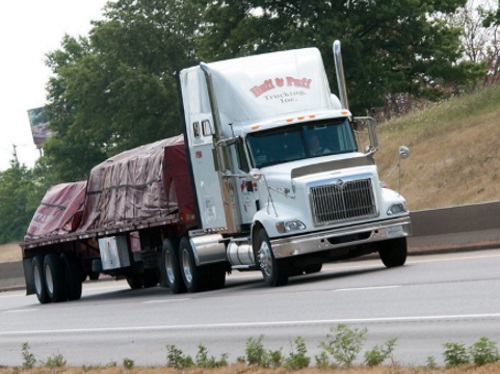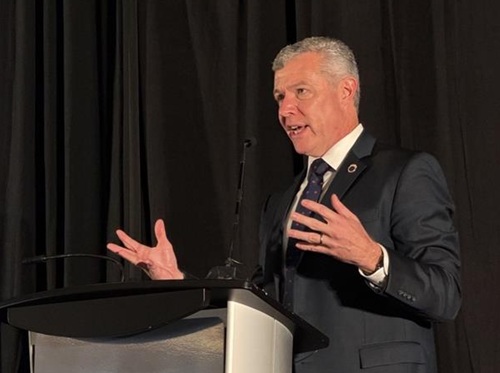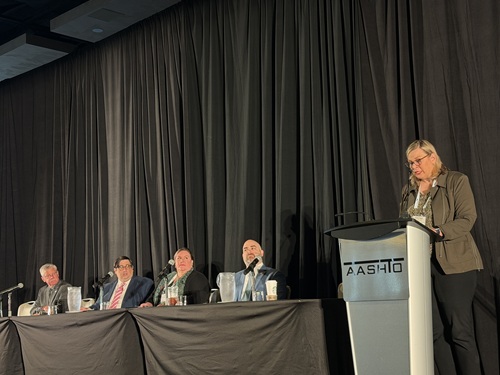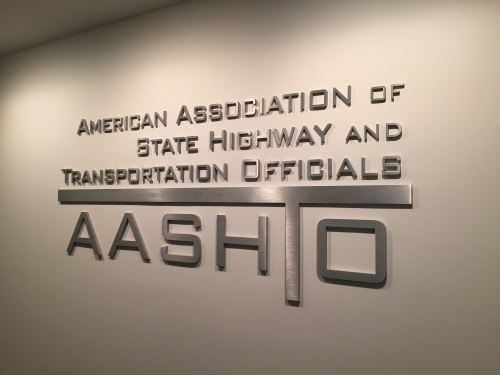The American Association of State Highway and Transportation Officials recently provided feedback to the U.S. Department of Transportation regarding its request for information on development of a National Multimodal Freight Network or NMFN.
[Above photo by AASHTO]
The organization noted in a letter to USDOT that state departments of transportation are “well aware” of the important role that safe and efficient infrastructure plays in keeping the American economy – composed of both people and goods – on the move.
“More broadly, the public at large has come to better appreciate the need for a well-supported freight network as supply chains have been strained and tested to their limits in recent years,” AASHTO said.

“That is why AASHTO and state DOTs support the development of the NMFN to help prioritize resources to enhance the nation’s existing freight networks and facilities to provide greater connectivity, efficiency, and safety to keep goods on the move,” the group noted. “Doing so will help meet shared goals of state DOTs and USDOT on safety, workforce development, and maximizing federal investments in infrastructure.”
AASHTO and its members also believe the NMFN can be a useful tool for freight planning, prioritizing state and federal resources, and ensuring connectivity between the modes of transportation and freight facilities across the country – with state DOTs playing a key role in that “connective” process via State Freight Plans and State Freight Advisory Committees.
However, the organization stressed that state DOTs have concerns about linking the NMFN directly to federal funding sources. “State DOTs are concerned about how the inclusion of the National Highway Freight Network (NHFN) will factor into the development of the NMFN map,” AASHTO said. “State DOTs request additional clarifications on the relationship of the NMFN, NHFN, and the National Highway Freight Program (NHFP), as well as any additional funding implications in this process to develop and implement the NMFN map.”
In its letter, AASHTO emphasized the importance of “connectivity across the modes” for moving goods in addition to the volume of freight that passes through a state on a particular mode of transportation. That is why the organization said USDOT should tap into State Freight Plans as a “helpful supplement” to NMFN data sources.
“These plans provide a broad range of state and local information in addition to the federal and national [freight] resources identified,” the group said. “Such plans may identify resources that have more granular levels of data as – within existing freight planning processes – state DOTs consider a variety of measurable thresholds, criteria, and data that are integrated into State Freight Plans, many of which have been updated to comply with the new Infrastructure Improvement and Jobs Act requirements.
“These plans offer a wealth of state information that will provide a broad array of perspectives on how to address [other] issues, particularly with regard to climate and sustainability,” AASHTO said.
 Top Stories
Top Stories
Collaboration Touted at AASHTO’s Third Safety Summit
October 31, 2025 Top Stories
Top Stories

